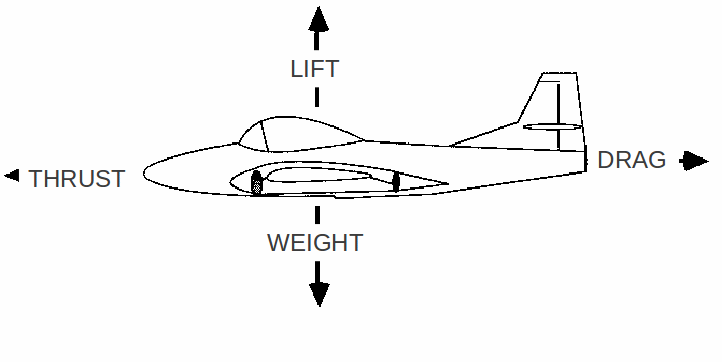Newton's first law of motion – the first of three – states that 'a body continues in a state of uniform motion unless acted on by unbalanced forces'. The word 'uniform' here means constant speed in the same direction. The converse is also true, so that if a body is acted on by unbalanced forces, either the speed of the body or the direction in which it is travelling will change.
A body will usually have at least two forces acting on it. These forces must be unbalanced if an acceleration is to result. All the bodies below have unbalanced forces acting on them.

The forces acting on body below are balanced, so each body will continue in a state of uniform motion. Note that for the second body, a force of 6N to the right is balanced by two forces of 4N and 2N to the left and on the third body a force of 5N acting to the left is balanced by two forces of 3N and 2N acting to the right.

A car travelling at constant speed. The force exerted by the car engine is balanced by athe equal and opposite force of friction acting on the car's wheels.
A plane travelling at constant speed and height. The force exerted by the plane's engines is balanced by the force of air resistance.
An body falling through a significant height will eventually reach a constant speed, where the force of gravity is balanced by the force of air resistance.
A plane travelling at constant speed on level fligh will expience balanced horizontal and vertical forces as shown below.

